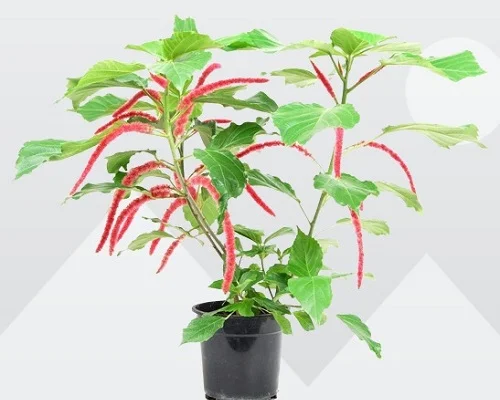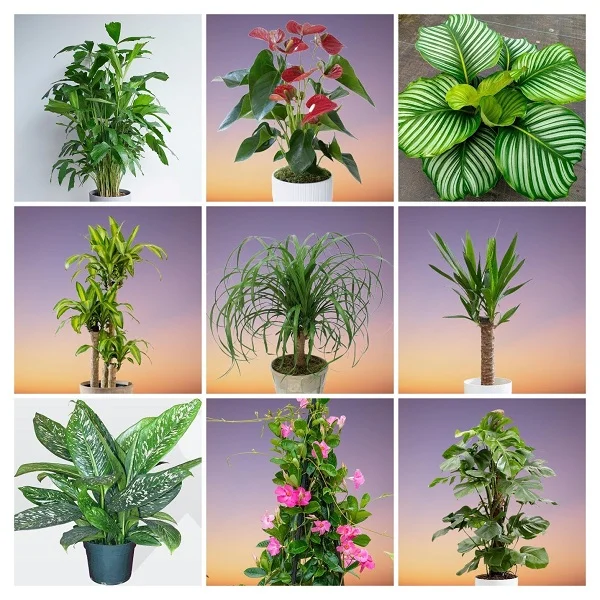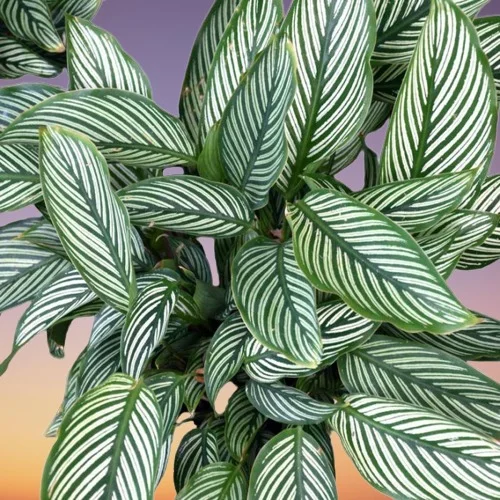Copperleaf Plant (Acalypha wilkesiana) Care, Common Issues and Remedies
Some links in this post may be affiliate links
Copperleaf Plant (Acalypha wilkesiana) thrives in bright indirect light, warm and humid conditions, and evenly moist, rich, well drained soil coupled with fortnightly feeding in the growing season.
Acalypha wilkesiana is grown both outdoors in warm climates and indoors as an ornamental houseplant. In this guide, we’ll cover the best practices for growing Copperleaf plants indoors and outdoors, along with common problems and solutions to help your plant stay healthy.
Copperleaf Plant also called Jacob's Coat or Fire Dragon is one of the popular, vibrant tree-like plants and exhibits attractive leaf colors making it a great accent plant in any space.
It bears broad, ovate to heart-shaped, serrated leaves which can range from red, copper, bronze to pink, green and white, giving them a beautiful vibrant appearance.
The leaves can grow quite large and can reach up to 6-8 inches in length and 4-6 inches in width upon maturity.
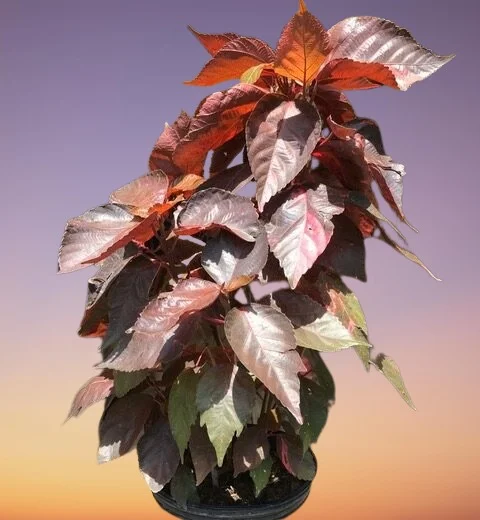
Botanical name: Acalypha wilkesiana
Synonyms: Acalypha tricolor, Acalypha amentacea
Family: Euphorbiaceae
Common names: Copperleaf Plant, Jacob's Coat, Fire Dragon Plant
Origin
Acalypha wilkesiana is native to South Pacific region, specifically the islands of Fiji and New Caledonia. It is widely cultivated in tropical and subtropical areas of Africa, Southeast Asia, the Caribbean and Central and South America.
Copperleaf Plant is a popular choice for gardens and landscapes in the warm climates which makes it perfect for USDA zones 10-12. In the cooler regions it is successfully grown as an indoor plant or in containers which can be brought indoors during winter.
Size
Copperleaf Plant is an evergreen shrub which can grow upto 9.8 feet high and upto 6 feet in diameter when given the right growing conditions. However, the size can be controlled through proper pruning. Acalypha wilkesiana is among the best plants for the living room where it will create a delightful first impression.
Flowers
Jacob's Coat bears separate male and female flowers on the same plant. The male flowers are in long spikes which hang downwards while the female flowers are in short spikes.
Varieties
Acalypha wilkesiana comes in several cultivars which exhibit a range of colors, patterns and leaf shapes. Some of the common varieties include;
Acalypha wilkesiana 'Marginata' which features green leaves with red margins.
Acalypha wilkesiana 'Godseffiana' with narrower leaves compared to others and often with a combination of green and creamy-white colors.
Acalypha wilkesiana 'Louisiana Red' which features deep red to burgundy leaves.
Acalypha wilkesiana 'Macrophylla' bears large leaves and has bronze-green foliage with pink to red veining and edges.
Acalypha wilkesiana 'Musaica' with a mosaic pattern of red, green, and bronze on its leaves.
Acalypha wilkesiana 'Firestorm' which bears fiery red foliage.
Related Content: Chenille Plant (Acalypha hispida) Indoor Care and Common Problems
Medicinal Benefits
As indicated by Wikipedia, Acalypha wilkesiana has been used in traditional medicine for treating mycoses (skin conditions and wounds). The leaves have been used as poultices to soothe skin irritations.
Toxicity
Copperleaf Plants are toxic to humans and pets. If ingested it may cause nausea, vomiting and diarrhoea while in severe cases, it may cause more serious gastrointestinal distress. Keep the plant away from the reach of children and pets.
Contact with the clear sap can cause severe dermatitis in some individuals. Always wear gloves when handling the plant and wash your hands thoroughly afterwards.
Where to Buy
If you would like to add these vibrant plants to your collection, you may acquire them online from Etsy (Link to Etsy).
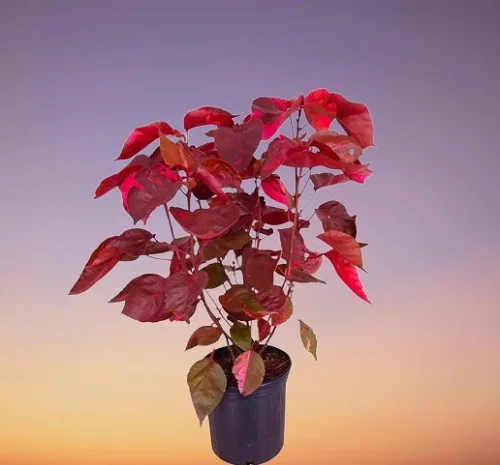
How to care for Copperleaf Plant indoors
Care for Copperleaf Plant entails providing bright indirect light (filtered light), moderate warmth of 18-270C, above average humidity of 55-70% and evenly moist, rich, well drained soil coupled with fortnightly feeding in the growing season.
Acalypha wilkesiana care requires regular pruning to control growth. Repotting is only needed when the plant becomes potbound. Keep reading for more on these growing conditions and how to achieve them.
Watering
Water your Copperleaf Plant thoroughly in spring and summer when the top 1-2 inches of soil dry out to keep the soil evenly moist. Avoid overwatering to prevent yellowing, rotting and leaf drop.
Decrease watering in fall and winter as growth is minimal at this time and maintain the soil slightly moist. Do not allow the soil to dry out completely as it may result in wilting and leaf drop.
Use water that is at room temperature to avoid cold shock which can result in stunted growth and leaf drop. Ensure that the water id free of chlorine and other dissolved chemicals to prevent browning of leaf edges and tips.
Confirm that the pot has a drainage hole and drain excess water from the catch plate or saucer to prevent the soil from getting soggy as it can lead to root-rot and death of the plant.
Light Requirements
Copperleaf Plant flourishes in bright indirect light. A spot infront of a brightly-lit window is ideal for this plant. Keep it away from direct sunlight to avoid scorching the leaves.
Too little light causes dull leaf colors and leggy growth. If the light in your home is not adequate, you may use grow lights to supplement it.
Regularly turn the pot to ensure the plant receives adequate light on all sides to promote even growth and prevent the plant from getting leggy.
During summer, you may move the plant outdoors for some sun but acclimate it gradually to prevent scorching. Ensure to bring it back inside in fall when temperatures begin to drop, it can tolerate a temperature of 150C.
Temperature and Humidity
Copperleaf Plant prefers a warmth of 18-270C. Keep it away from drafts from windy doors, drafty windows, AC units, hot air vents and others to prevent temperature flactuations which can lead to leaf drop and reduced growth.
Acalypha wilkesiana requires a humidity of 55-70% to thrive. Low humidity may result in brown leaf tips and edges. Therefore, to upscale humidity, set the pot on a wet pebble tray or use a humidifier.
Pro tip: Ensure that there is good air circulation to prevent fungal infestations.
Feeding
What is the best fertilizer for Copperleaf Plant?
Feed your Copperleaf Plant every 2-3 weeks during the growing season with a balanced, water-soluble fertilizer to boost healthy growth of the plant.
Withhold feeding in the cold season (fall and winter) as growth is minimal at this time and feeding the plant at this time can lead to fertilizer burn and death of the plant.
Soil
The best potting mix for Copperleaf Plant should be a well-draining, fertile soil with a slightly acidic to neutral pH (6.0-7.0). A mix made up of 50% potting soil, 30% peat moss or coco coir and 20% perlite or sand is ideal for this plant.
Repotting
Repot your Copperleaf Plant every 1-2 years at the beginning of spring only when it has become pot-bound.
Use a pot 1 size larger than the current one. Ensure that it has a drainage hole to avoid getting soggy to prevent root-rot. Check out these ceramic pots with drainage holes on Amazon.
Slip the plant out of its pot, shake off the old potting mix and trim the dead roots with clean, sterilized scissors.
Place the plant in the center of the new pot and refill with fresh, quality, free-draining potting mix.
Wet the soil thoroughly until water comes out through the drainage hole, empty the saucer and place the plant infront of a well-lit window.
Pruning & Grooming
Pruning Copperleaf Plant involves:
- Removal of dead leaves and flowers to keep the plant neat and discourage pests and diseases infestations.
- Regularly pinch off the growing tips to control growth and encourage a more compact growth.
- Cut back the large by half at the beginning of the growing season.
Occasionally clean the leaves with a damp soft cloth to get rid of dust as well as minimize pest infestations.
Pro tip: Use a sharp, sterilized pruning scissors for clean cuts and also to prevent fungal diseases.
Copperleaf Plant Care Outdoors
Copperleaf Plants are tropical plants which require warm and humid conditions to thrive. They are not cold hardy, therefore, they are best grown as houseplants in the cold climates.
However, in climates with harsh winters, Acalypha wilkesiana can be grown outdoors as container plants during spring and summer which are brought inside when the temperatures drop to about 150C in fall.
Cutback the plant by half, place it in a warm, humid place where it can receive bright light and reduce watering to keep the soil slightly moist but do not let it dry out completely.
Do not feed the plant at this time as growth is reduced and ensure that there is good air circulation to prevent fungal infestations.
Once the temperatures warm up to 150C in spring, move the plant outdoors under bright sunlight but shield it from hot midday sunlight to prevent scorching of the leaves.
Ensure that the soil remains moderately moist but not soggy by watering when the top 2-3 inches of soil feels dry and feed the plant every 2-3 weeks with a balanced fertilizer to encourage foliage growth.
Propagation
Copperleaf Plant (Acalypha wilkesiana) can be propagated at the beginning of the growing season (spring) from stem cuttings. The cuttings can be rooted either in water or in soil.
Learn How to Propagate Copperleaf Plant (2 Ways of Acalypha wilkesiana Propagation).
How to grow Copperleaf Plant from seeds
Spread Copperleaf Plant seeds evenly on moist free-draining soil and cover lightly with some soil.
Cover the set up with a plastic sheet to create a greenhouse effect to hasten germination.
Place the set up in a warm, brightly-lit place away from direct sunlight.
Maintain the soil moist through out by light misting the soil surface until the seedlings are well established.
When the seedlings have true leaves formed and are a reasonable size, transplant them into individual pots.
Position the pots in a warm, well-lit spot and maintain the soil moist until the new plants are well established after which you can begin normal routine care.
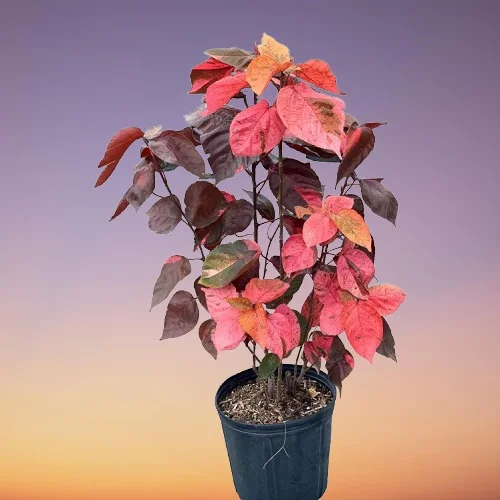
Copperleaf Plant Problems & Solutions
Copperleaf Plant (Acalypha wilkesiana) common problems include loss of leaf color, leaf drop, pests among others. Keep reading for more on these problems and how to fix them.
Loss of leaf color
Loss of leaf color in Copperleaf Plant is due to too little light, overwatering, and underfeeding.
How to fix it
Too little light: Place the plant infront of a large, brightly-lit window or instal a grow light if the natural lighting is not sufficient.
Overwatering: Water only when the top 1-2 inches of soil dry. Do not water on a schedule.
Underfeeding: Feed the plant every 2-3 weeks in the growing season (spring and summer) with a balanced, water-soluble fertilizer.
Leaf drop
Leaf drop in Copperleaf Plant is caused by incorrect watering, soggy soil, low light, and pest infestations.
How to fix it
Incorrect water: Maintain the soil evenly moist and never allow the soil ball to dry out completely.
Soggy soil: Use a pot with a drainage hole and well-draining soil. Always empty the saucer after watering.
Low light: Position the plant in a brighter spot or use a grow light.
Pest infestations: Regularly inspect your plant for these pests and carry out timely control measures.
Pests
Common pests in Copperleaf Plant are mealybugs, aphids and spidermites. Isolate the affected plant to prevent spread to the rest of the plants and treat it with neem oil or insecticidal soap. Make sure to follow the instructions on the label.
Frequently Asked Questions
1. Is Acalypha wilkesiana indoor or outdoor?
Acalypha wilkesiana is a great choice for gardens and landscapes in the warm climates making it ideal for USDA zones 10-12. In the cooler climates it is grown as an indoor plant or as a container plant that can be overwintered indoors.
2. How to make Acalypha bushy?
To encourage a bushy and compact growth for your Acalypha, regularly pinch off the growing tips. Where the plant has grown too big, cut it back by half at the beginning of the growing season. This will promote growth of fresh shoots and a more bushy plant.
3. Can you grow Acalypha from cuttings?
Acalypha can be grown (propagated) at the beginning of the growing season (spring) from stem cuttings which can be rooted either in water or in soil.
4. Is Acalypha wilkesiana toxic?
Acalypha wilkesiana is toxic to humans and pets as indicated by poisonsinfo.health.qld.gov.au. If ingested it may cause nausea, vomiting and diarrhoea while in severe cases, it may cause more serious gastrointestinal distress.
5. Is Acalypha wilkesiana a shrub?
Acalypha wilkesiana is an evergreen shrub which can grow upto 9.8 feet high and upto 6 feet wide.
You liked it? Share on social media.
Related Content
Amazon Associates Disclosure
Homeplantsguide.com is a participant in the Amazon Services LLC Associates Program, an affiliate advertising program designed to provide a means for sites to earn advertising fees by advertising and linking to amazon.com.



